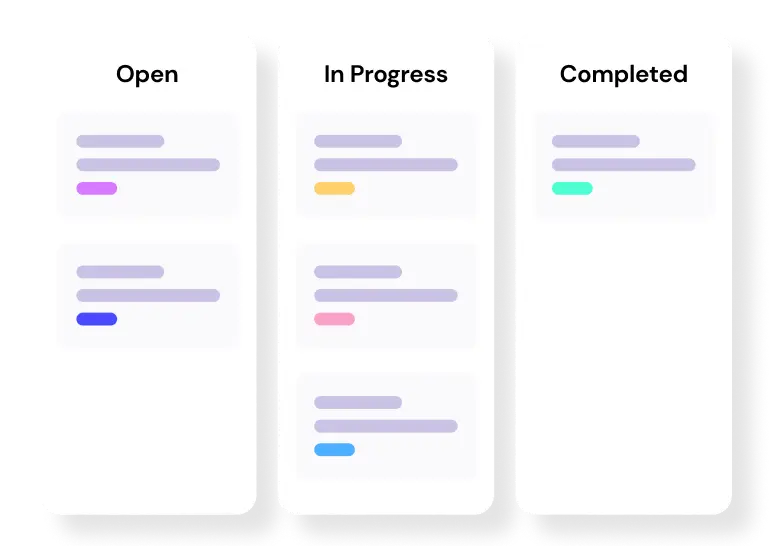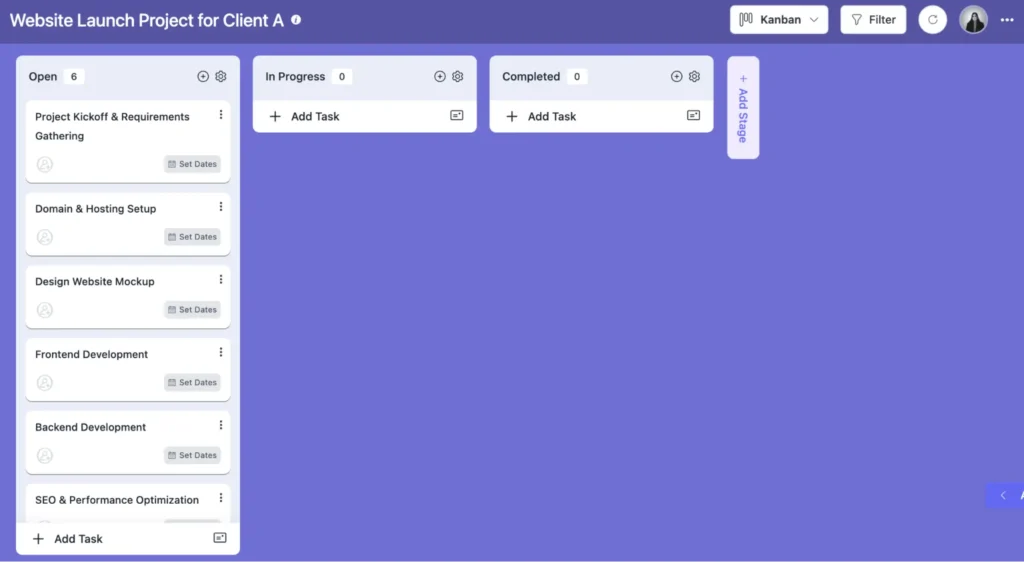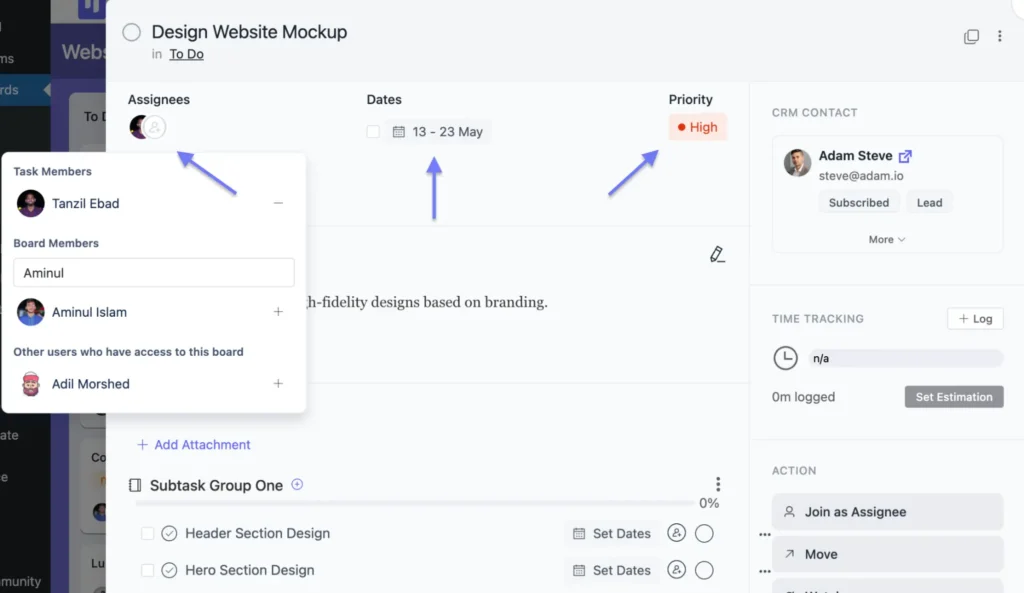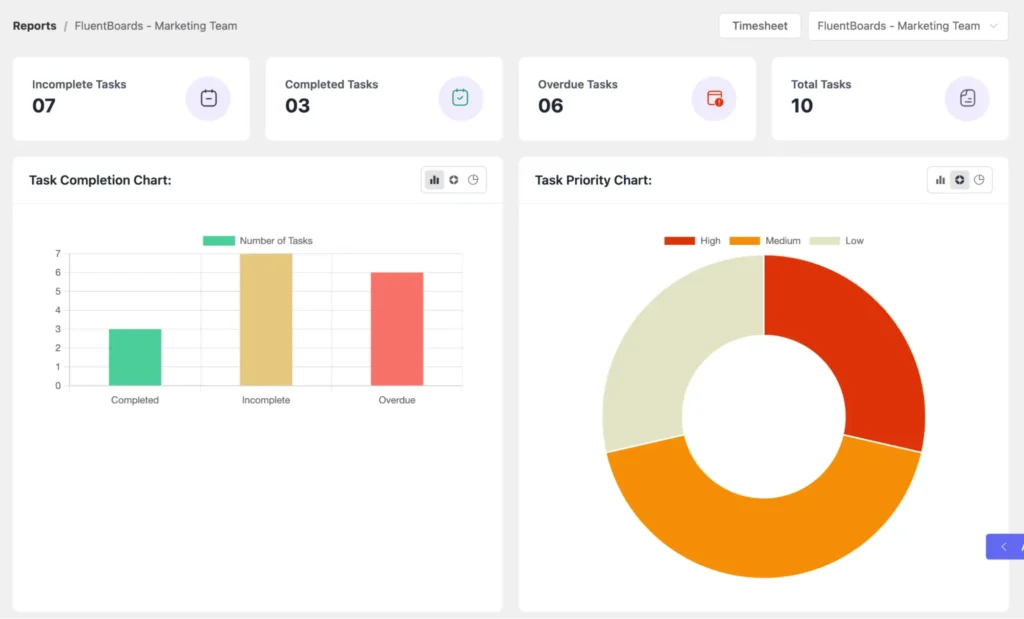
Project Goals Explained: What They Are, Why They Matter, and How to Set Them
“Setting goals is the first step in turning the invisible into the visible.”
– Tony Robbins
This quote captures the foundation of every successful project. In the project lifecycle, everything begins with defining what you aim to achieve.
Without clear goals, projects often face common challenges such as:
- Confusion over priorities
- Unclear responsibilities
- Difficulty tracking progress
- Uncertainty about what success means
These issues don’t come from a lack of effort but from a lack of direction. That’s exactly where well-defined project goals come in, offering clarity and alignment from the start.
In this guide, we’ll break down the fundamentals of project goals, what they are, why they matter, and how to set them effectively.
Let’s dive in!
What is a Project Goal?
Project goals are high-level statements that define what a project aims to achieve by setting the strategic direction and purpose, aligning stakeholders and team members around a shared vision of success.
These goals form the foundation for more measurable and actionable steps called project objectives, which help manage progress and ensure alignment throughout the different phases of project management.
In a nutshell, a well-defined project goal acts as a guiding principle, ensuring priority-focused success within the project’s scope.
What Are the Three Main Types of Project Goals?
Project goals generally fall into three categories, depending on what you’re trying to achieve:
Outcome-oriented goals: Outcome-oriented project goals focus on achieving a specific result, with flexible timelines to ensure quality, such as reaching major milestones or meeting strategic growth targets.
Process-oriented goals: Process-oriented goals prioritize improving internal systems and workflows, enhancing efficiency by focusing on how work is done rather than on specific outcomes or deadlines.
Time-bound goals: Time-bound goals focus on timely actions tied to specific deadlines. They support long-term plans and help teams complete high-priority tasks efficiently within strict timeframes.
Why Clear Project Goals Matter?
Clear project goals are the foundation of every successful project. Here’s what clear project goals can lead your project to:
1. Clarity and focus
Clear goals eliminate confusion by outlining what needs to be done and why. This sharpens focus, reduces wasted effort, and helps the team stay on track.
2. Motivation and momentum
When everyone understands the “why” behind their work, motivation naturally follows. Achieving milestones also builds momentum that carries into future projects.
3. Alignment and unity
Well-defined goals align the team and stakeholders around a shared purpose. This unity not only strengthens team collaboration skills but also supports broader company objectives.
4. Prioritization and smart resource use
Goals provide structure by clarifying what matters most, enabling teams to prioritize efforts, distribute resources strategically, and manage budgets with purpose.

Level up your WordPress project management game with this Trello equivalent solution – where limitless possibilities come at an unbeatable price!
5. Measurable progress
With clear goals in place, it’s easier to track progress, measure success, and make adjustments when needed, ensuring performance is more transparent.
6. Accountability and ownership
Defined goals clarify individual roles and responsibilities, so everyone knows what they’re accountable for, which encourages a stronger sense of ownership.
7. Strategic contribution
Great project goals tie directly into your organization’s larger vision, ensuring your work doesn’t just finish but makes a meaningful impact.
8. Proactive risk management
When goals define scope and boundaries, it’s easier to spot risks early and address them before they escalate.
Understanding the Difference Between Goals and Objectives in Projects
While project goals and objectives are often used interchangeably, they work together to define what the project aims to accomplish and the steps needed to get there.
- Project Goal: A project goal defines the broad, long-term outcome your team aims for, providing direction and purpose. It’s the “what” you want to accomplish by the project’s end.
- Project Objective: A project objective breaks that goal down into specific, actionable steps that show exactly “how” to achieve it.
By understanding the difference between a project’s broad goal and specific objectives, project managers can create clear, measurable steps to achieve success.
How to Set Project Goals in 7 Essential Steps Effectively
Here’s a step-by-step guide to setting project goals that are practical, results-driven, and easy to follow –
Step 1: Define your project purpose and goal
Every successful project begins with understanding its core purpose.
- Why are you doing this project?
- What value will it deliver?
- What will success look like?
Answering these questions upfront provides clear guidance and focus, helping everyone stay on track from the start.
To ensure this, involve key stakeholders, clients, and team members in a shared discussion to align on what’s important and clearly define the project’s direction.
Once everyone’s on the same page, you can then define a meaningful project goal that reflects the outcome you’re working toward.

Then divide them into specific, measurable objectives. These are the steps that move the project forward.
This clarity helps the team stay focused and work toward meaningful outcomes that align with the overall project vision.
Step 2: Apply the SMART framework
Now, in this step, apply the popular SMART framework—a structured method that brings clarity and direction to your goal-setting process.
SMART is a proven technique that requires project goals to meet five essential criteria:
- Specific: Clearly state what you want to accomplish.
- Measurable: Identify how progress and success will be tracked.
- Achievable: Ensure goals are realistic given your resources, budget, and constraints.
- Relevant: Align goals with the overall project direction and business objectives.
- Time-bound: Set deadlines to maintain focus and urgency.
For example, if the project’s purpose is to enhance online presence, a SMART goal might be: Increase website traffic by 25% in four months through SEO content and site optimization.
Step 3: Break down larger goals
After applying the SMART framework, turn your attention to how the team will achieve the project goals.
This involves breaking down larger goals into smaller, manageable tasks, which simplifies complex objectives, maintains team focus, and enables more effective management of progress.

Moreover, this approach keeps your project organized and makes progress easy to measure, giving you a clear roadmap from start to finish. The project workflow stays efficient, and the team can maintain steady progress without feeling overwhelmed or confused.
At the same time, staying flexible by regularly reviewing and adjusting goals is crucial for managing unexpected project challenges or changes.
Step 4: Create an action plan
In this step, plan how to achieve your tasks:
- Who will be responsible for each task
- What roles and skills are required
- How much time and effort will each task take
- What resources, tools, or costs are involved
By clearly mapping out these elements and documenting your action plan, you can set realistic expectations, prevent resource conflicts, and avoid costly overruns.
Also, this gives you a solid understanding of how the goal will be reached and keeps everyone aligned.
Step 5: Set the plan into action
With a clear plan in place, it’s essential to begin executing it through well-defined, actionable steps that your team can follow.
Start by:
- Assign tasks to the right team members to ensure accountability.
- Set deadlines for each task to keep the project on track and add priority to maintain a sense of urgency.
- Provide the necessary resources and support to help the project team complete their work efficiently and on time.

A well-organized task setup and clear assignment of responsibilities create a solid foundation, enabling the team to maintain strong momentum throughout the project execution phase.
Step 6: Ensure clear communication
Once your plan is all set, it’s important to ensure clear communication. This usually happens in two main ways:
- Among teammates
- And between your team and clients or stakeholders

To support this, encourage your team to have open, real-time conversations, which help answer questions quickly and prevent confusion.
Step 7: Track and adjust progress
Even with a strong action plan, flexibility is key. Monitor progress regularly. Check if tasks are being completed on time, review milestones, and make adjustments where needed.

Also, celebrate small wins; they help maintain momentum. Regular tracking ensures the team stays aligned and quickly adapts to any changes or obstacles.
Real World Examples of Effective Project Goals
Let’s explore some practical examples of project goals that are purpose-driven, strategy-aligned, individual-focused, and measurable.
Employee-focused project goal
A common goal in many organizations is to increase employee engagement, which directly affects productivity and retention.
For example, a project goal could be to improve engagement scores by 10% within six months by:
- Conducting quarterly employee surveys
- Offering flexible work schedules
- Implementing team recognition programs
Customer-focused project goal
Customer satisfaction is crucial for business growth. A clear project goal might aim to increase customer satisfaction ratings by 15% over the next year by:
- Reducing customer service response time by 20% using AI chatbots
- Personalizing customer interactions through CRM tools.
- Gathering and acting on customer feedback regularly
Operational project goal
Simplifying operations can save time and reduce costs. For example, a project goal could be to increase operational efficiency by 20% in the next nine months by:
- Automating 30% of routine tasks
- Identifying bottlenecks in workflows and resolving them
- Integrating new technologies to enhance team productivity
Financial project goal
Financial health is fundamental for any project’s success. A typical goal might be to increase profitability by 12% within the next fiscal year by:
- Launching two new revenue-generating products or services
- Cutting non-essential expenses by 10%
- Introducing dynamic pricing strategies to improve profit margins
Technical project goal
In today’s digital landscape, data security is vital. A relevant project goal could be to reduce security incidents by 30% over 12 months by:
- Migrating critical infrastructure to secure cloud platforms
- Conducting monthly security audits
- Providing cybersecurity training to 90% of employees

FluentRoadmap Comes Free with FluentBoards Pro!
Proven Best Practices for Defining Project Goals
Here are proven best practices to follow when setting project goals that deliver real results and keep your project on track:
- Align with project objectives to stay focused and on track
- Collaborate with stakeholders to align goals and gain diverse input
- Prioritize essential project goals to focus efforts and allocate resources effectively
- Balance short- and long-term goals to maintain steady progress
- Keep goals visible in meetings and discussions to reinforce focus
- Set realistic timelines with input from both leadership and the execution team
- Involve the project execution team when planning timelines to ensure feasibility
- Stick to objective deadlines to support timely goal achievement
- Schedule recurring check-ins to address issues early
Mistakes to Avoid When Setting Project Goals
Here are key mistakes to avoid if you want your project goals to stay on track:
- Confusing specific objectives with broader project goals limits long-term success
- Setting unrealistic goals lowers team motivation and slows progress
- Excluding key stakeholders causes misalignment and reduces success chances
- Skipping regular progress reviews leads to missed targets and unresolved issues
- Not staying within your budget strains resources and harms morale
- Not defining SMART goals creates confusion and unclear direction
- Ignoring deadlines causes procrastination and missed milestones
- Setting too many goals overwhelms teams and wastes resources
- Failing to align goals with company strategy wastes effort and value
Define Goal, Set Direction, Go Achieve
You’ve now seen how project goals shape the success of any initiative. The next step? Putting it into action.
Start by defining your goals clearly, and know what matters and why. Then, set a direction that keeps your team aligned and focused.
With thoughtful planning, strong collaboration, and a commitment to those goals, you can turn strategy into outcomes.
So, don’t just set goals, define them clearly, set the right direction, and take action to achieve them!
Thanks for reading, here’s to setting smarter goals and achieving more with every project you lead!
Let’s redefine project management with FluentBoards!
Get Tips, Tricks, & Updates
We won’t send you spam.









![how to create a project management workflow [x steps] (2)](https://fluentboards.com/wp-content/uploads/2025/11/How-to-create-a-project-management-workflow-x-steps-2-768x402.webp)





Leave a Reply